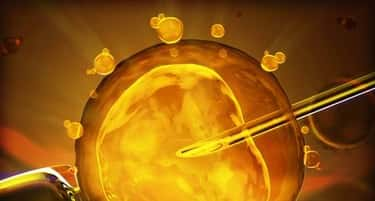What is Intra Cytoplasmic Sperm Injection (ICSI) and how is it done

Intra cytoplasmic sperm injection (ICSI) is an assisted reproductive technology (ART) that is used in the treatment of fertility issues that are related to sperm. ICSI is the direct introduction of sperm into the cytoplasm of an egg gotten through in vitro fertilization (IVF). ICSI is used to boost the fertilization phase of an IVF procedure by injecting just a sperm into a mature egg. The fertilized egg is afterwards introduced into the woman’s womb or her fallopian tube.
It is generally recommended to couples when there is a suspicion that it may be difficult for them to achieve fertility. It is mostly used for treatment that deals with male infertility factors where the infertility is caused by issues like low sperm count, poor sperm motility treatment, poor quality of sperm and where the sperm is unable to penetrate the egg or azoospermia. Azoospermia occurs when there is no sperm in the semen ejaculated by a man. It is of two different types: Obstructive and non–obstructive azoospermia.
Causes of obstructive azoospermia are:
After effect of Vasesctomy
Congenital lack of vas
Infection scars
The cause of non–obstructive azoospermia is the inability of faulty testicle to produce sperm. With azoospermia, it is very minimally possible to obtain a useful sperm. In a situation like this, the man may be recommended to make use of a donor sperm.
Sperm retrieval
To retrieve sperm from men who are suffering from low sperm count or low motile sperm, the sperm is usually collected through normal ejaculation by masturbation. If this method doesn’t work, sperms are removed surgically from the testicle via a minor incision. Surgery is recommended when there is a blockage that inhibits the collection of sperm through normal ejaculation or where there is poor sperm development.
However if the male factor infertility is due to vasectomy, the cheaper option for restoring the fertility of the man is through microsurgical vasectomy reversal. Other great options that can be used when microsurgical vasectomy does not work are the needle aspiration or microsurgical sperm retrieval. They are also option to access if the man is unwilling to go for surgery. Through the use of needle aspiration, the medical practitioner can retrieve faster the numbers of sperm that are necessary for the practice of ICSI. This method involves the use of a small needle to obtain as many sperm as possible from the testis of the man.
Needle aspiration is an uncomplicated procedure carried out under sedation. It results to minimal discomfort. Nevertheless, it is possible to experience pain and swelling after the procedure. The sperm gotten from the testicles is only suitable for ICSI when the testicular sperm cannot penetrate the egg by itself.
It is recommended that men who lack sperm in their ejaculation or those with minimal sperm in their semen to go for genetic screening to rule out any problem that may affect their children before going for ICSI procedure.
Ovulation induction and egg retrieval
To prepare a woman for egg retrieval procedure, she’d be given shots every day and be closely monitored for 2 weeks before the eggs are finally retrieved. The woman would usually inject herself at home with gonadotropin or follicle-stimulating hormone (FSH) to motivate her ovaries to produce many eggs. The partner may as well help the woman with the injection. The process is known as superovulation. After the first week, the doctor carrying out the procedure would usually examine the estrogen levels in the blood of the woman and make use of ultrasound to check if her eggs are maturing in the follicles. In the second week, the dosage of shots may be altered depending on the result of the test and that gotten from the ultrasound.
When the follicles are fully developed, the woman is injected with a human chorionic gonadotropin (hCG) boost the maturity of the egg follicles. After 34 to 36 hours, the matured eggs are collected. The collection of the egg is done through a process known as laparoscopy or needle aspiration. This is normally directed by ultrasound through the woman’s tummy area into her ovaries.
Sperm injection and transfer
At this level of the procedure, a glass tool is used to keep the egg still in a position and a small glass tube is used to put a single sperm into the egg. The culture is left to stay in the lab overnight. After that, the eggs are checked for evidences of fertilization. After incubation, the fertilized eggs or those with three to five days left for additional development are chosen.
One or more of the fertilized eggs are placed into the womb of the woman with the use of a thin flexible tube known as catheter that is normally inserted through the woman’s cervix. Depending on the woman’s age and her medical situation, the doctor would usually recommend the number of embryos to transfer into the womb. The leftover embryos are frozen for future use.